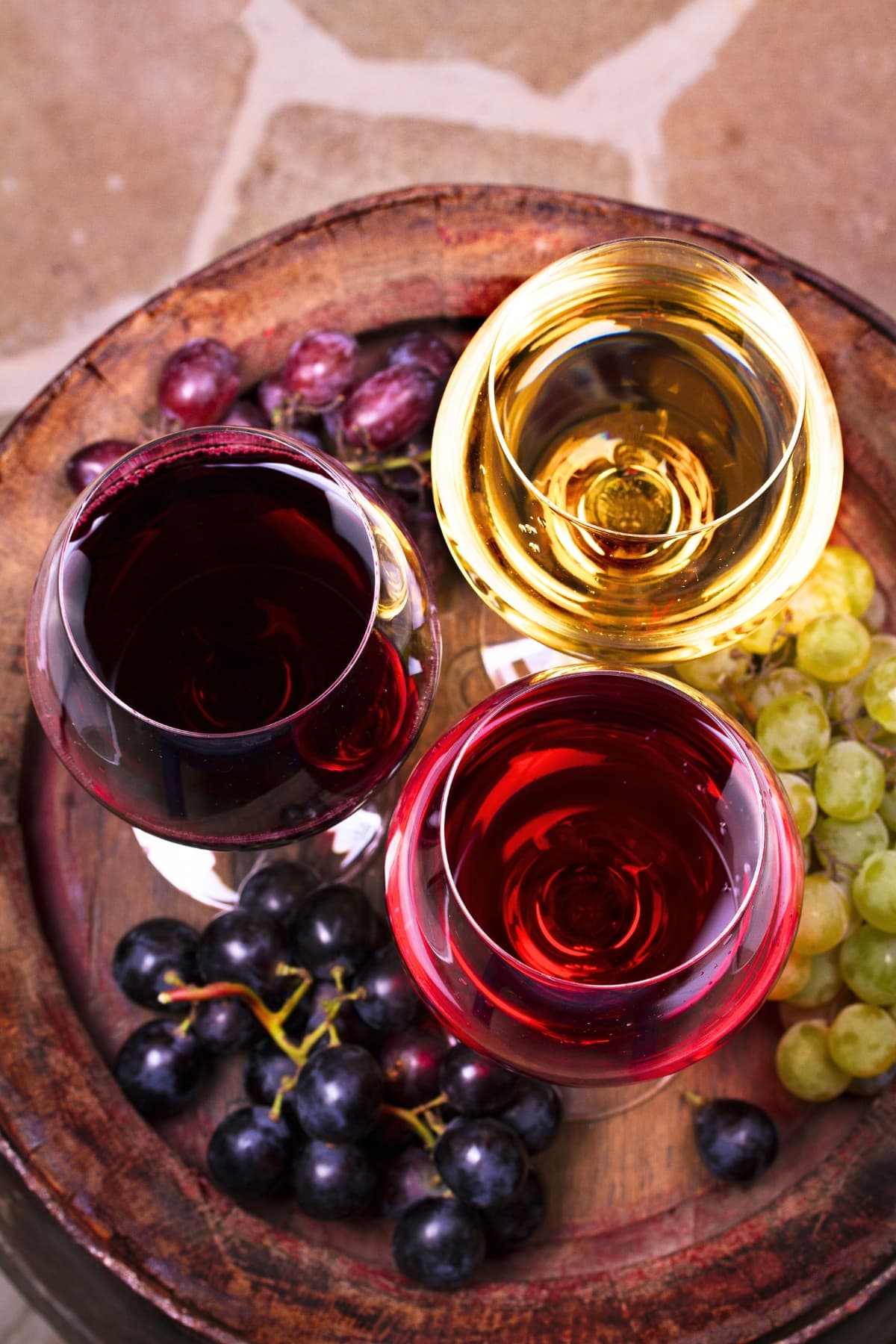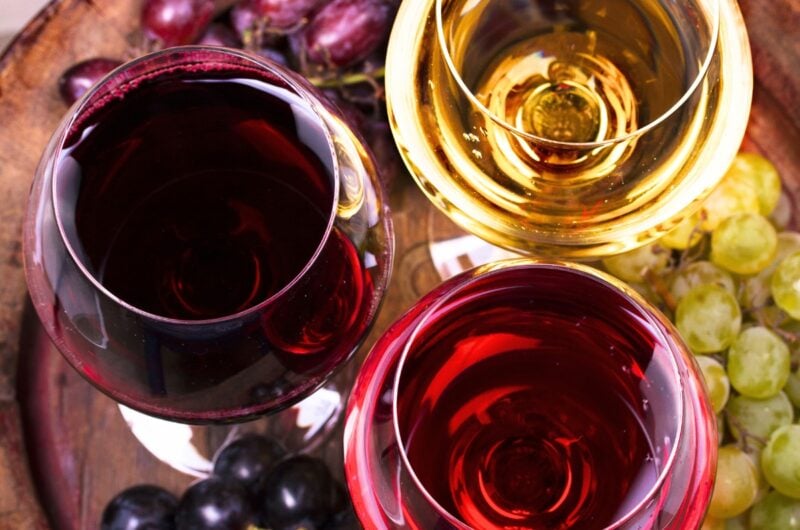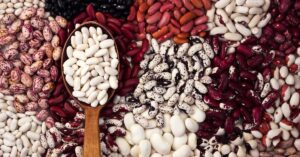Hey there, sweet tooths and budding wine enthusiasts! Here are 13 types of dessert wine you have to sample.
Dessert wines are far better than their reputation suggests. So, it is high time we appreciate their variety. They are not all sugar bombs- I promise!
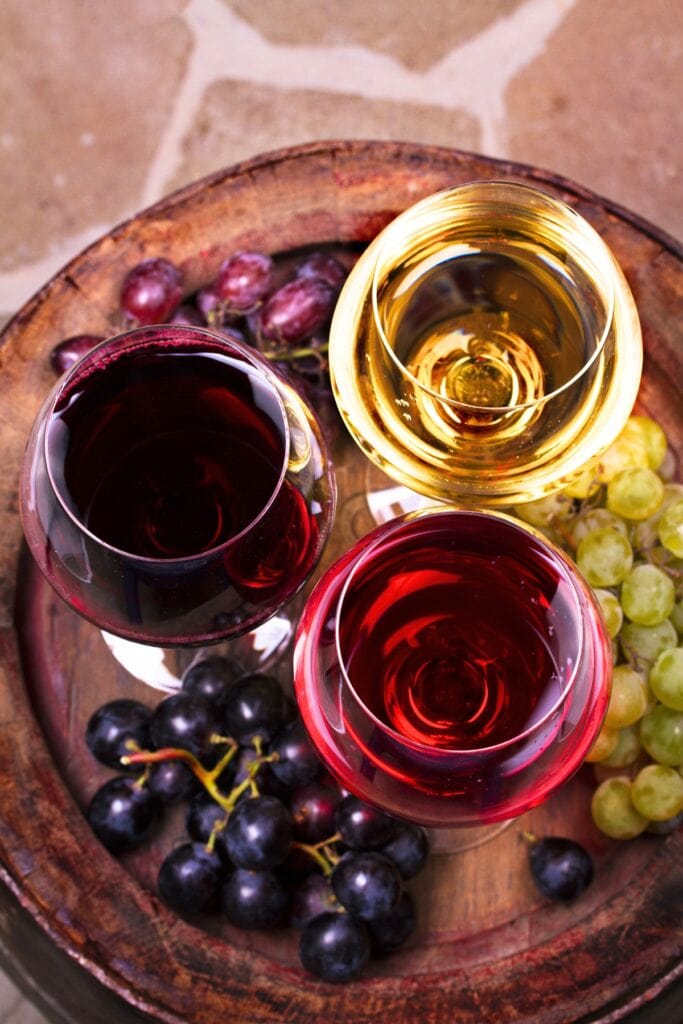
Different Types of Dessert Wine
Dessert wines can be complex, with varying levels of sweetness.
Sure, some of them are super sweet, but others are not. In fact, some dessert wines are even dry.
New to the dessert wine scene? No worries! Your palate is in for a treat with these types of dessert wine.
What Is Dessert Wine?
Dessert wines are after-dinner drinks made with various grapes and methods of production.
Dessert wine is a broad category encompassing sweet red, sparkling, and fortified wines.
These wines are sweeter compared to other wines. And they have a higher alcohol content too.
Serve them with dessert or cheese. Or sip them solo!
The secret to their sweetness lies in specialized harvesting and winemaking techniques:
- Late harvest: By harvesting later than usual, producers obtain riper, sweeter grapes. Some grapes are even left to wither on the vine for added sweetness.
- Fortification: They achieve this by adding spirits to the wine, like brandy. This process stops fermentation and boosts alcohol content.
- Noble rot: The grapes undergo intentional rotting through a fungus called Botrytis Cinerea. The fungus extracts the moisture out of the grapes, making them sweeter.
These methods demand skill, expertise, and a lot of time. Therefore dessert wine is often more expensive than regular wine.
Dessert Wine Tips:
- When picking a dessert wine, choose one sweeter than your dessert (or cheese). Otherwise, your food might taste bitter, which can be off-putting.
- Serve white dessert wines slightly chilled. About 15-20 minutes in the fridge before serving should do.
- Serve red dessert wines at room temperature. Sometimes a slight chill is good, too.
- As dessert wine is rich and sweet, you do not want to serve too much. Small sips suffice.
- Serve it in dessert wine or sherry glasses. Those glasses are ideal for small servings.
Types of Dessert Wine
Alright, you know the basics. So, let’s get this show on the road!
1. Icewine (Eiswein)

Icewine (Eiswein in Germany and Austria) is a sweet, unfortified dessert wine. It is a favorite in Germany and Canada.
The term “ice wine” derives from the production method. Producers allow grapes from colder climates to freeze on the vine before harvesting.
This process captures both sweetness and acidity.
Icewine requires over 6 pounds of grapes for a 375-ml bottle. No wonder it is expensive!
Icewine has a luscious dessert-like taste.
Its high acidity and residual sugar offer a fresh, lively palate. Its alcohol content falls somewhere between 6-10%.
German Eiswein uses frozen Riesling grapes for a concentrated, sweet juice balanced by vibrant acidity.
Expect flavors of tropical fruit, citrus, and honey.
Canadian Icewines have rich textures and apricot, peach, and citrus flavors.
They use a variety of grapes, including Vidal Blanc, Riesling, and Cabernet Franc.
Icewine pairs well with chocolate, fruits, rich cheeses, and foie gras. You can also sip it solo.
2. Port
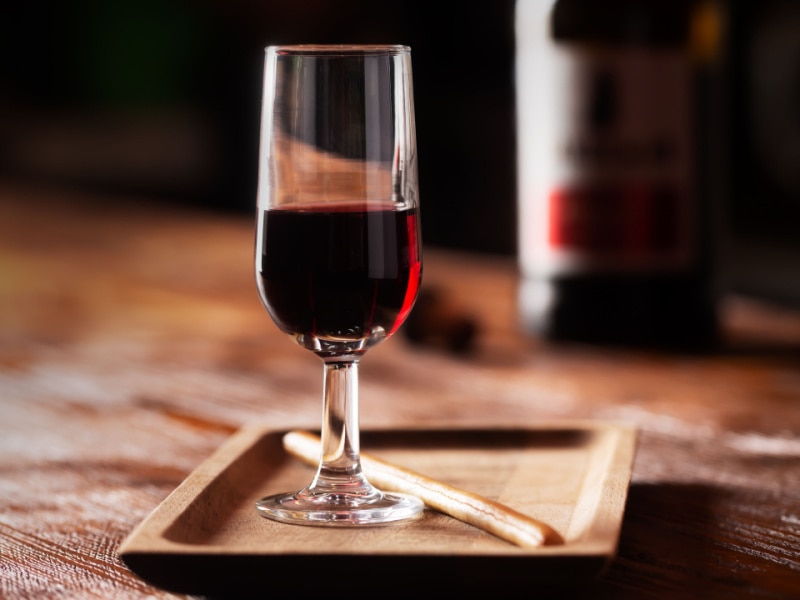
Port is a fortified wine from Porto, Portugal, produced in the Douro Valley.
This wine uses both white and red grapes in its production. Producers age every batch for at least two years. Its sweetness level depends on how long it has aged.
But mainly, Port is renowned for its richness, sweetness, and high alcohol content. It pairs well with various desserts, chocolates, and cheeses.
The main Port varieties include:
- Ruby Port: a blend of several vintages. It ages 2-3 years, making it the sweetest and fruitiest among Port wines. It goes great with chocolate desserts and strong cheeses.
- Tawny Port: aged longer in wooden barrels, spanning 10-40 years. Its nutty toffee caramel flavor pairs well with nuts, caramel, or coffee desserts.
- Vintage Port: the top-tier Port. It ages for about 2 years in oak, then further in the bottle. Pair it with blue cheese or dark chocolate desserts.
- White Port: made from white grapes. It can vary from dry to extremely sweet. It is fantastic with lighter desserts or spicy Asian food.
3. Madeira
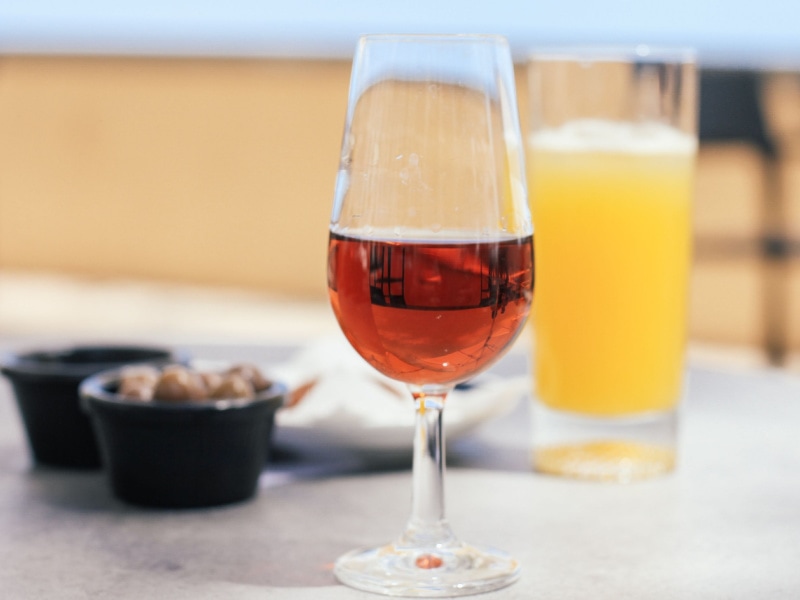
Madeira is a fortified wine from Portugal’s Madeira region. It is not as popular as Port but deserves just as much love.
It features a medley of local white wine grapes.
The wine undergoes intentional oxidation, resulting in nutty, smokey honey, fruity, and toffee flavors.
Its taste ranges from light and dry- to rich and sweet. It depends on the grape variety used and its aging duration.
Notably, Madeira can last for centuries without refrigeration. It even gets richer and tastier with time. You don’t even need to cork it to keep it fresh!
Madeira wine pairs well with chocolate, fruit, coffee-based desserts, or hard cheeses.
4. Sherry

Far from a mere cooking wine, sherry is gaining popularity as a dessert pairing.
The two most famous sherries are Pedro Ximénez (PX) and Moscatel.
PX wine has a unique production process. The grapes are sun-dried to concentrate their sugars and flavors.
After pressing, the juice is fermented, fortified, aged, and blended with wines from different vintages.
This makes PX one of the sweetest wines around. It also boasts dried raisin, fig, date, spice, and chocolatey aromas.
It tastes delicious with and over vanilla ice cream- just a drizzle!
Moscatel sherry is fruitier with floral notes and a slightly drier finish. It pairs well with lighter fruit-based desserts.
5. Vin Santo
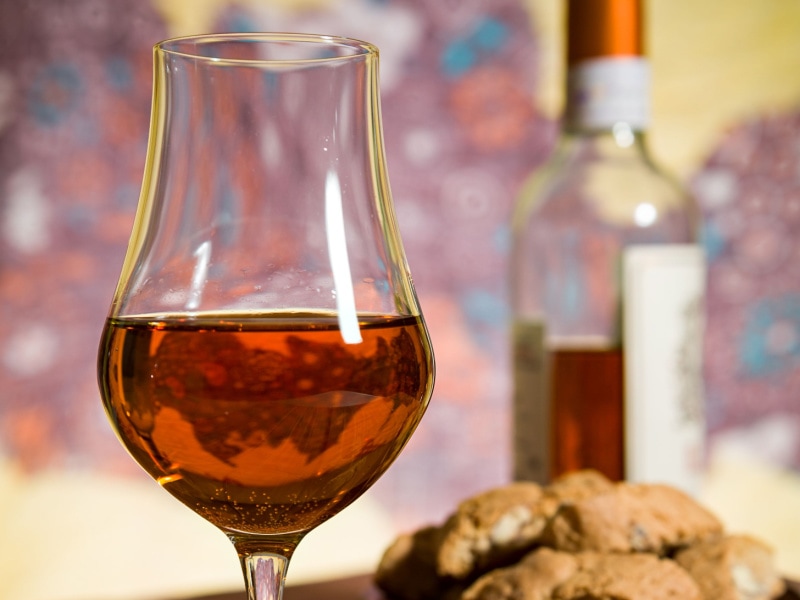
Vin Santo, “holy wine”, hails from Tuscany, Italy. It’s an intensely sweet dessert wine.
It’s made from white grapes, Trebbiano Toscano, Malvasia Bianca Lunga, or a blend. Red versions use Sangiovese.
What sets it apart is its production method called “appassimento.”
After harvest, grapes dry on straw mats or racks in ventilated rooms. The result is a dry fruit with high sugar levels and concentrated aromatics.
After pressing, the juice undergoes slow fermentation. It’s fortified with grape spirit, leaving residual sweetness.
It undergoes aging in small chestnut, cherry, or oak barrels, which are then sealed with cement.
The aging process takes 3-10 years. This gives Vin Santo complex flavors and a deep amber-to-tawny color.
The best Vin Santo is rich. Traditionally, you can enjoy it by dipping almond biscotti into the glass.
6. Moscato d’Asti
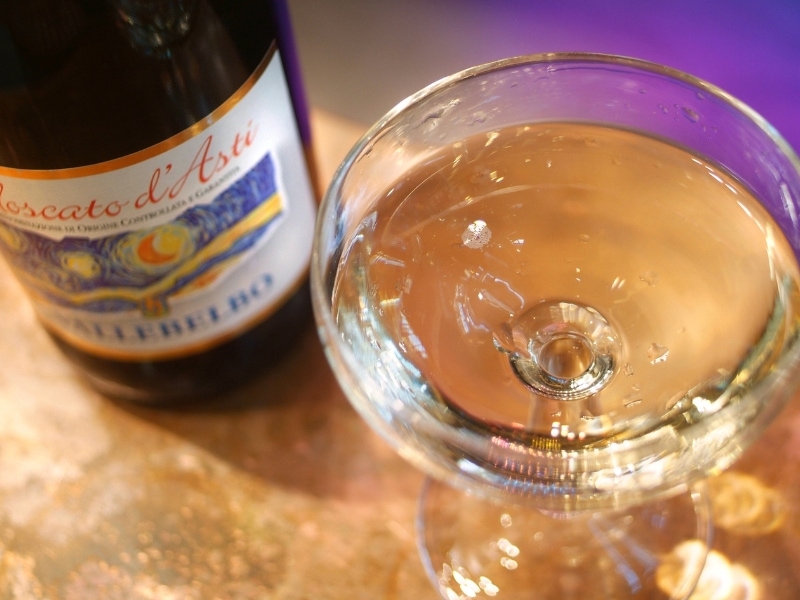
Moscato d’Asti is a sweet sparkling wine from Italy’s Piedmont region.
It features Moscato Bianco grapes and’s known for its fragrant, joyful profile. (P.S. It is my favorite wine.)
It’s unique with its gentle fizz and pronounced fruitiness.
The wine has prominent flavors of peaches, nectarines, and orange blossoms.
Nuances of elderflower and honeysuckle complement these flavors. So delicious.
Its vibrant acidity balances the wine’s sweetness, offering a refreshing finish.
Its low alcohol content (5-6%) makes it a popular choice for a gentler wine.
Moscato d’Asti is incredibly versatile.
It pairs well with creamy desserts like panna cotta or tiramisu. It also goes excellent with spicy Asian cuisine and aged cheeses.
7. Sauternes
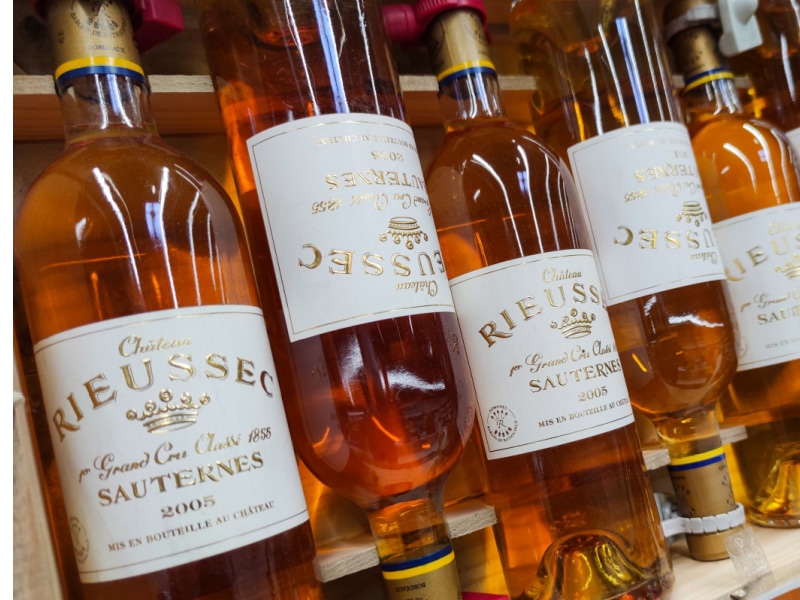
Sauternes is a prestigious dessert wine from Bordeaux, France.
Its unique flavors stem from a phenomenon known as noble rot.
The region’s specific climatic conditions favor the growth of a fungus called Botrytis Cinerea.
Late harvesting encourages this noble rot, which concentrates the grapes’ flavors and aromas.
The resulting wine is a fusion of honey, tropical fruits, caramel, and coconut flavors. Plus, it has a delicious hint of spice.
The wine’s golden color deepens as it ages, and its flavor profile grows more complex. Over time, it gains notes of caramel, nuts, and mushrooms.
Despite its sweetness, Sauternes has an excellent balance of acidity.
The wine pairs wonderfully with fruit-based desserts, soft cheeses, foie gras, and spicy dishes.
8. Tokaji Aszú
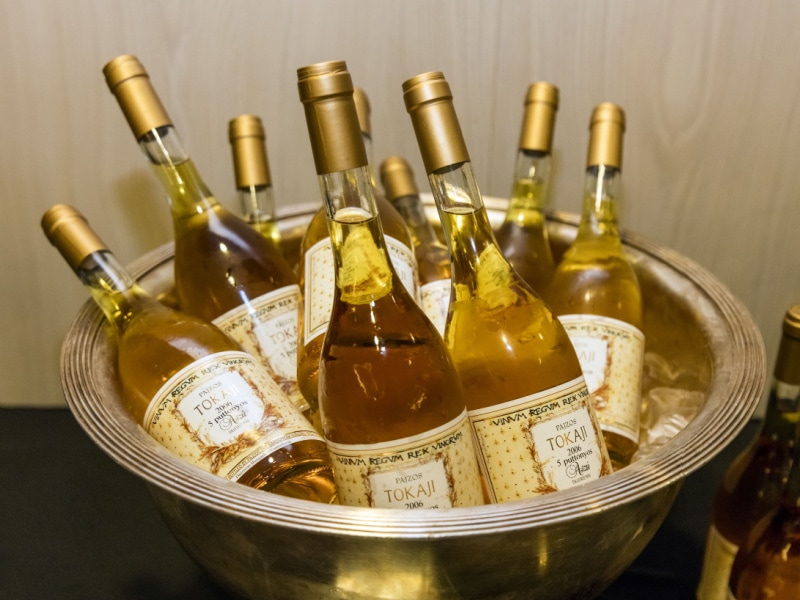
Tokaji Aszú is a world-renowned sweet wine produced in the Tokaj region of Hungary.
The region’s volcanic soil and unique microclimate favor noble rot development.
The production is labor-intensive, as grapes infected with botrytis are individually hand-picked.
Tasting notes include honey, apricot, orange marmalade, ginger flavors, and a mineral streak.
Oak aging adds vanilla, caramel, and coconut notes to the wine’s flavor profile.
Although Tokaji Aszú is sweet, it keeps balanced acidity. This wine is wonderfully refreshing to the palate.
It pairs well with fruity desserts, light and blue cheeses, or a standalone treat.
This wine ages remarkably well, strengthening and improving for decades- or even centuries.
Fun fact: Louis XV reportedly called Tokaji the “king of wines and wine of kings.”
9. Vin Doux Naturel
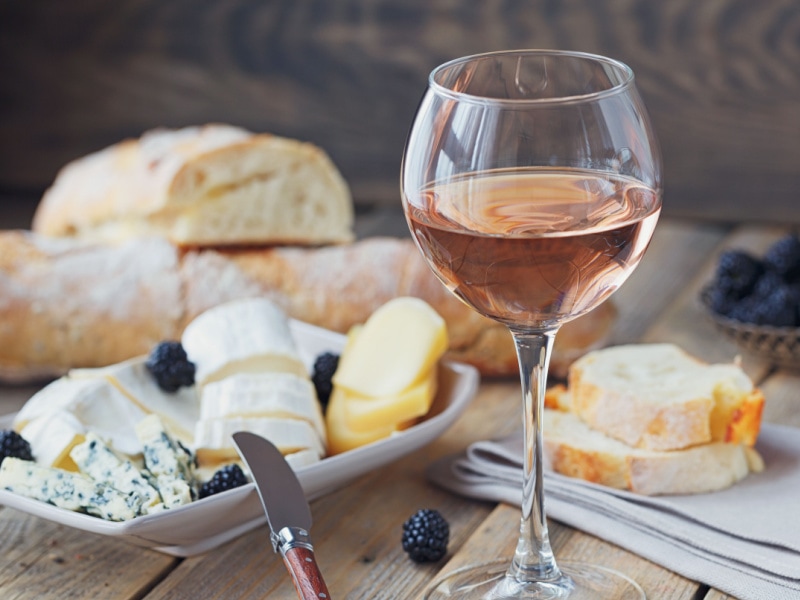
Vin Doux Naturel (VDM) is a naturally sweet wine from France. Its name literally means “naturally sweet.”
This sweetness results from a process called mutage.
During mutage, a neutral grape spirit halts fermentation, preserving natural grape sugars.
The technique leaves high levels of residual sugar, enhancing the wine’s sweetness. The process also boosts the wine’s alcohol content.
VDN comes in red, white, or rosé, from southern France. Different regions use different grape varieties, giving them nuanced flavors.
VDNs offer rich profiles with high alcohol content.
Red VDNs may exhibit dark fruits, chocolate, and spice notes. White VDNs are aromatic, boasting exotic fruits, citrus, and floral hints.
VDNs pair well with various dishes, serving as aperitifs or dessert wines.
White and rosé VDNs complement foie gras, blue cheese, or fruity desserts.
Red VDNs match with chocolate desserts, fruit tarts, blue cheese, or spicy dishes.
10. Sweet Riesling

Sweet Riesling reinforces the image of Riesling as a sweet varietal thanks to its balancing acidity.
Riesling grapes are versatile, producing wines from bone dry to very sweet.
Regions like Germany and Austria are best known for sweet Rieslings.
Germany has classifications for sweetness: Spätlese, Auslese, Beerenauslese, Eiswein, and Trockenbeerenauslese.
The final three (very sweet) come from noble-rotten or frozen grapes.
Sweet Riesling offers a bouquet of honey, ripe fruits, and minerals. With age, this wine gains a subtle petrol aroma.
Despite its sweetness, Riesling’s vibrant acidity ensures balance.
The alcohol content in sweet Rieslings can range from 7 to 13% ABV.
These wines age well, improving over decades in the bottle.
Pair sweet Riesling with spicy Asian cuisine, rich pâtés, blue cheeses, or fruit desserts.
11. Recioto della Valpolicella
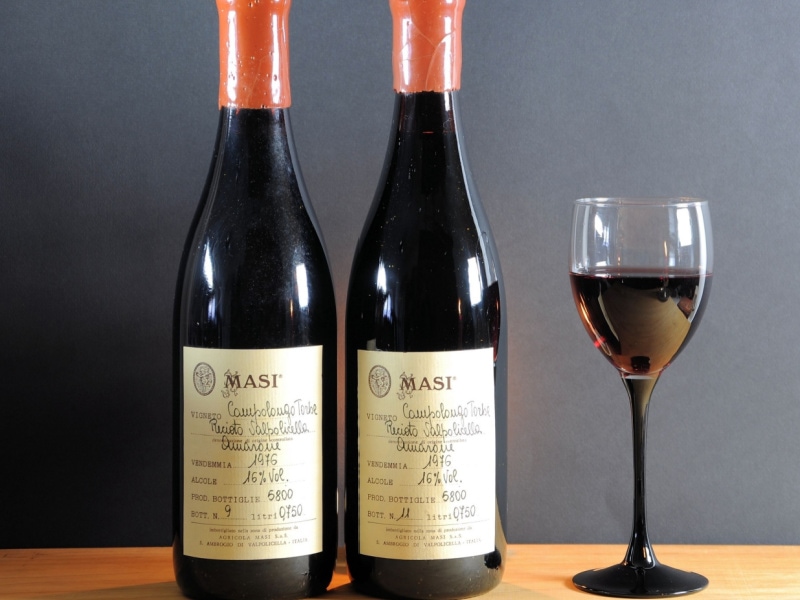
Recioto della Valpolicella is a sweet red wine from the Veneto region in Valpolicella, Italy.
It comes from dried Corvina, Rondinella, and Molinara grapes.
This wine is one of the oldest known, produced by the method called “appassimento.”
The technique dries grapes to concentrate their sugars, enhancing the wine’s sweetness. Drying stops the fermentation process early, leaving residual sugar and ripe, dark fruit flavors.
It has a rich taste profile, with notes of cherries, dried figs, and chocolate. Its alcohol content ranges from 12 to 15%.
Recioto tastes excellent with chocolate, blue cheese, and nutty, fruity, or coffee-flavored treats.
12. Vouvray Demi-Sec

Vouvray Demi-Sec is a semi-sweet wine from France’s Loire Valley. It features Chenin Blanc grapes.
This wine comes in still and sparkling styles and offers a range of flavors.
Chenin Blanc has bright acidity, tropical and stone fruit notes, and a floral aroma.
Vouvray Demi-Sec is the sweet, sparkling style of this famous wine.
This wine is versatile, suitable for starting or ending the evening. It pairs well with soft cheeses, nuts, and fruit-based desserts.
One recommended brand is De Chanceny. It has a nice balance of ripe fruits, honeyed aromas, and a stony finish.
13. Lambrusco
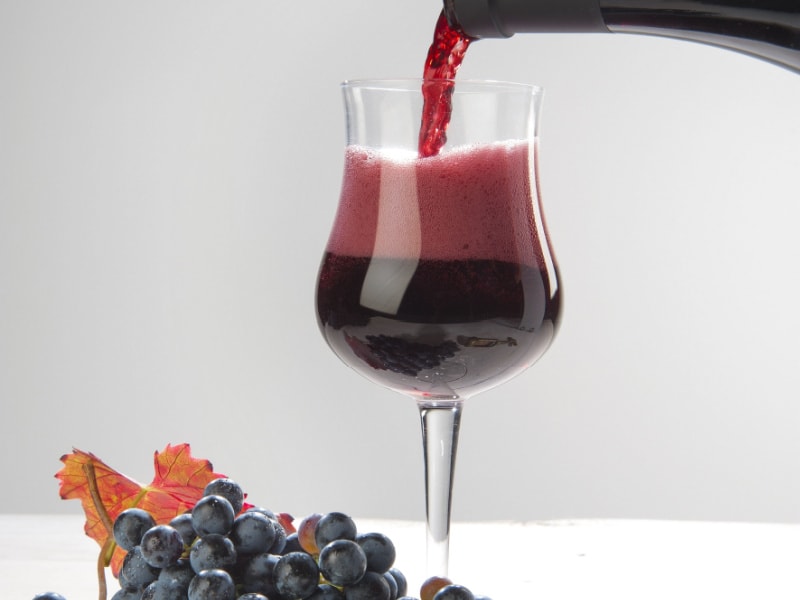
Lambrusco is a sparkling red wine from the Emilia-Romagna region of Italy. Its styles range from dry to sweet.
It had a rocky reputation in the past. But today, Lambruscos are far more refined.
Sweet Lambrusco offers juicy berry flavors and refreshing fizz.
Look for “Dolce“ on the label for a sweet version. And “Amabile“ for a semi-sweet option.
One recommendation is Reggiano Medici Sweet by Medici Ermete. This wine has violet aromas and red fruit undertones.
Pair Lambrusco wine with fruity desserts, charcuterie, and cheese.


